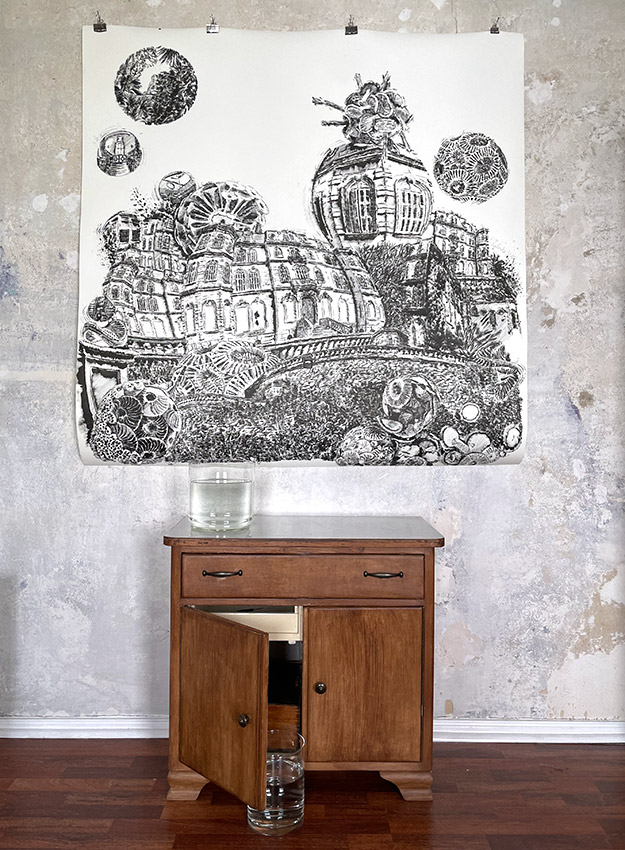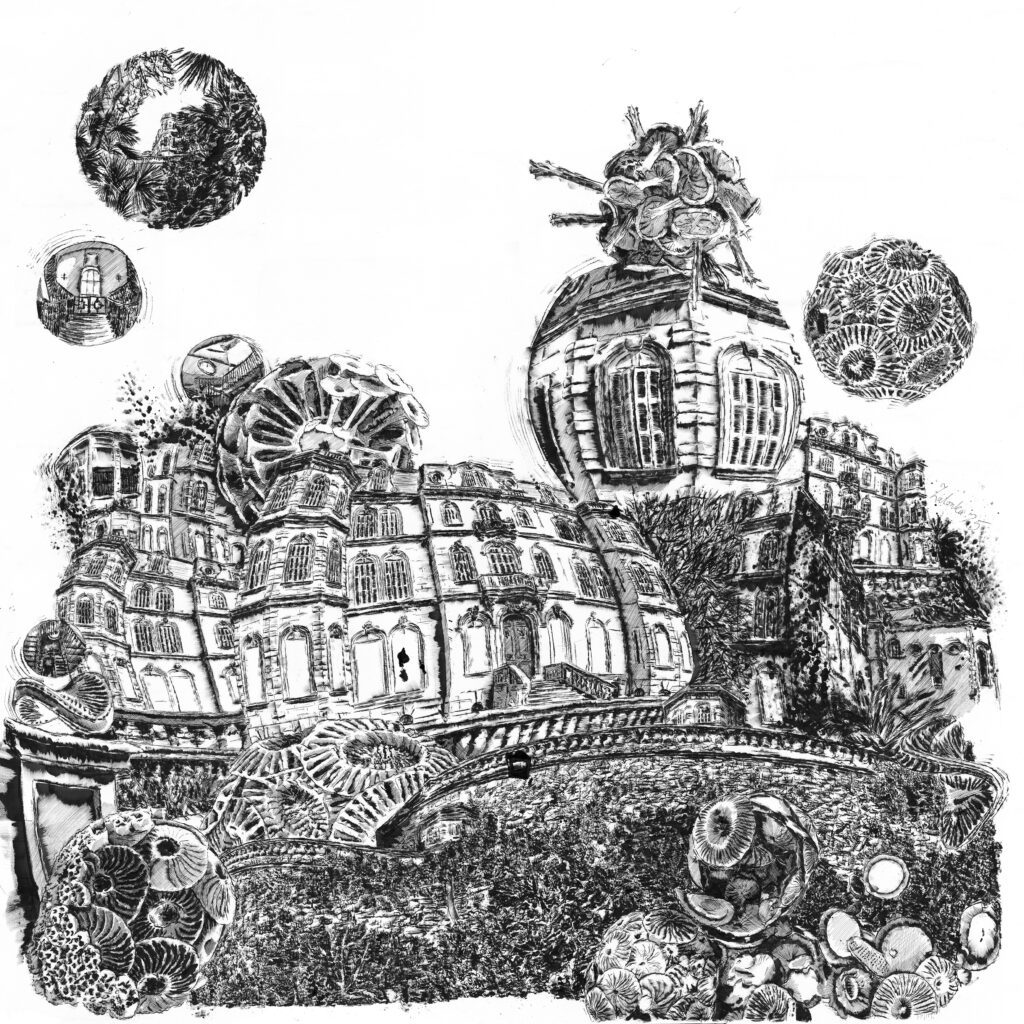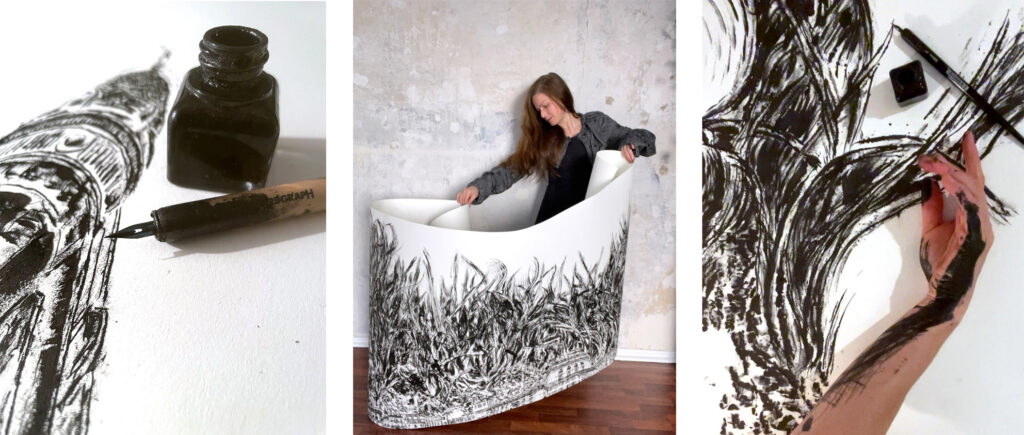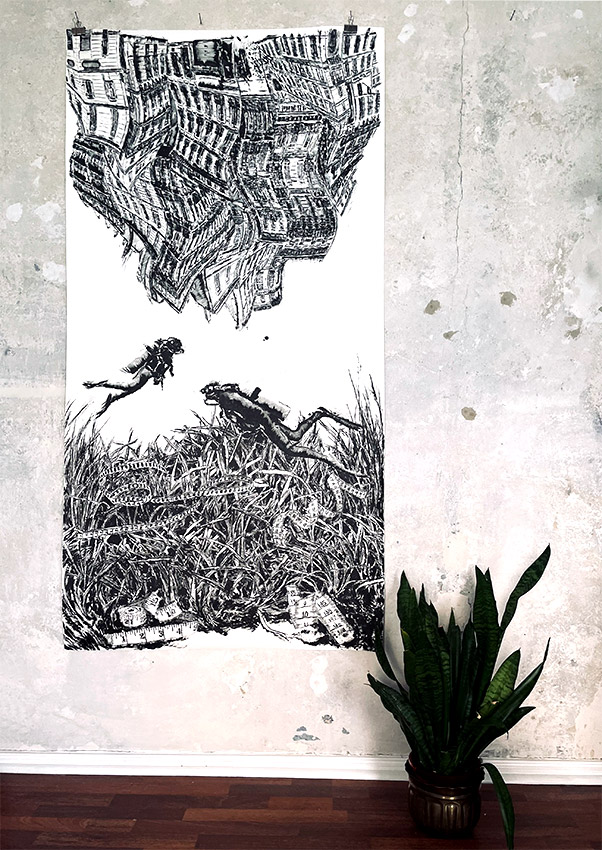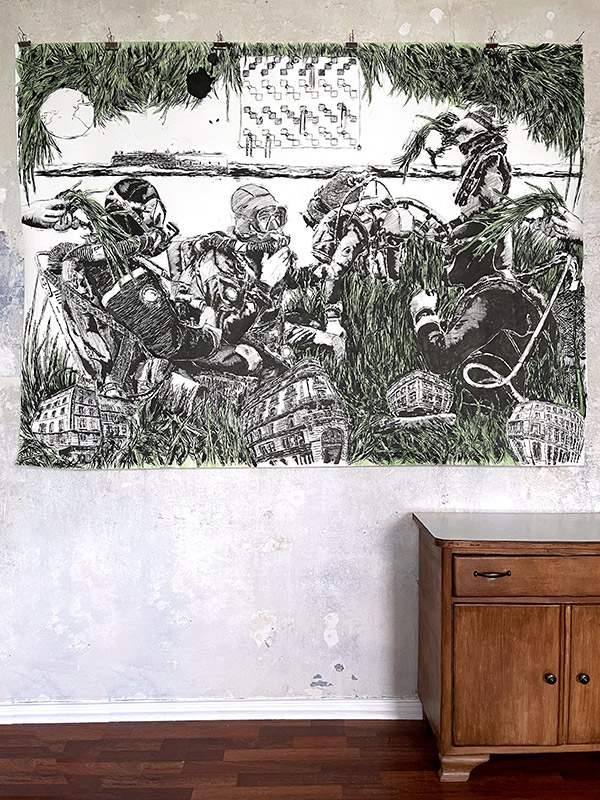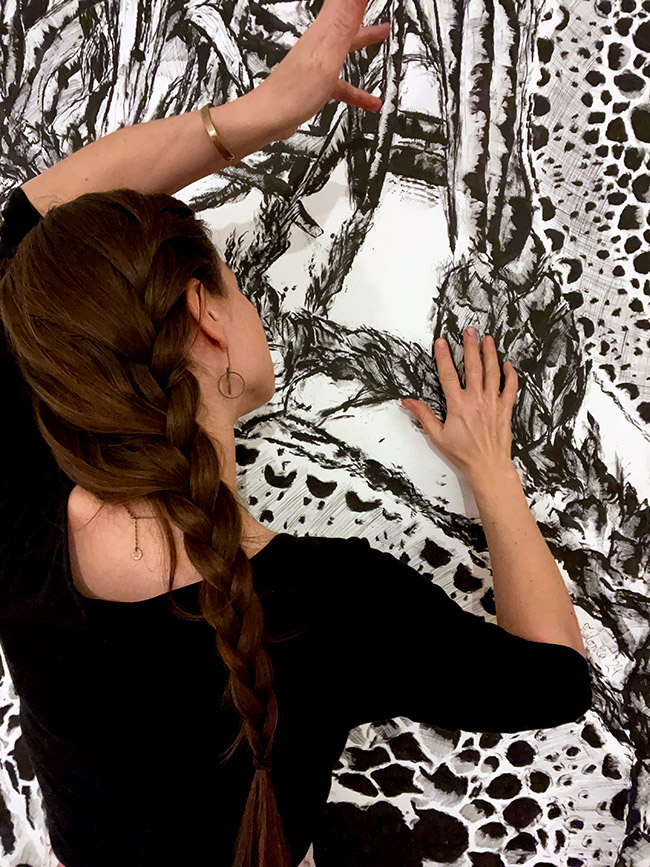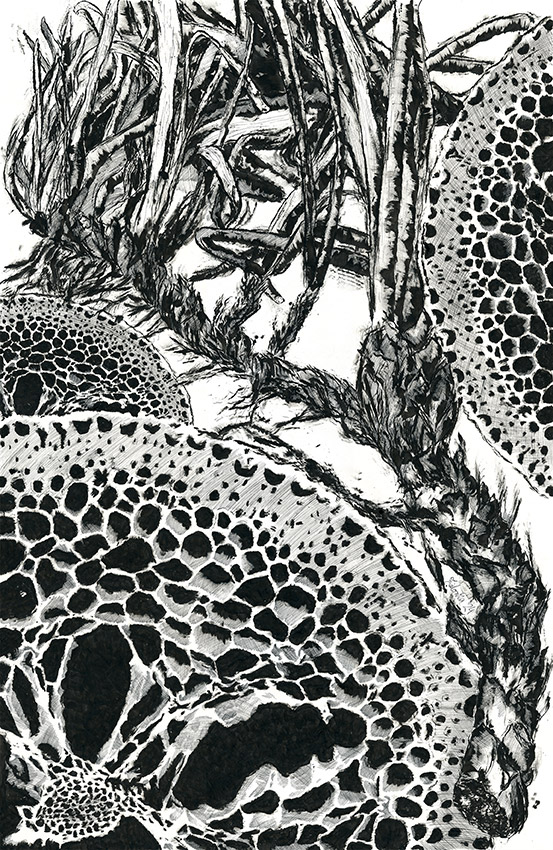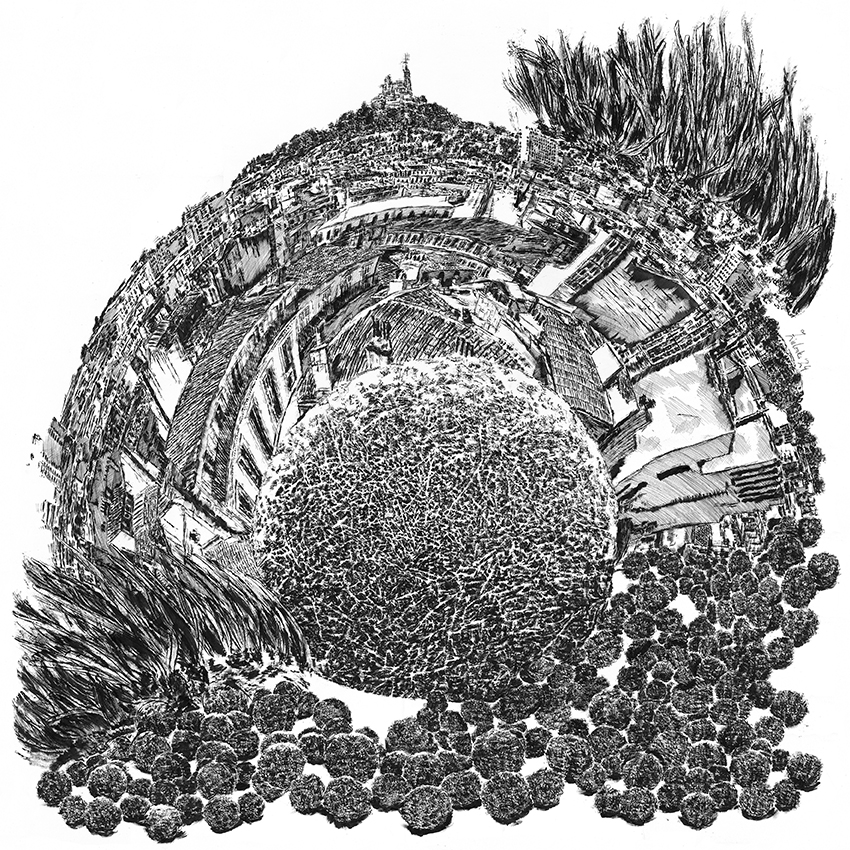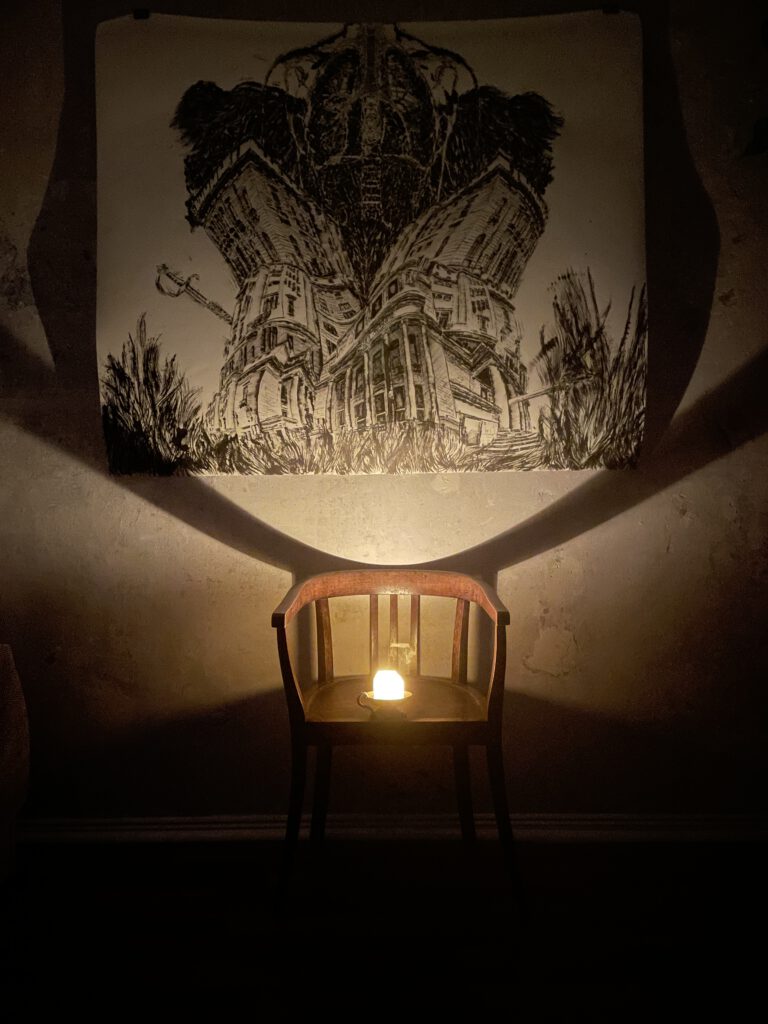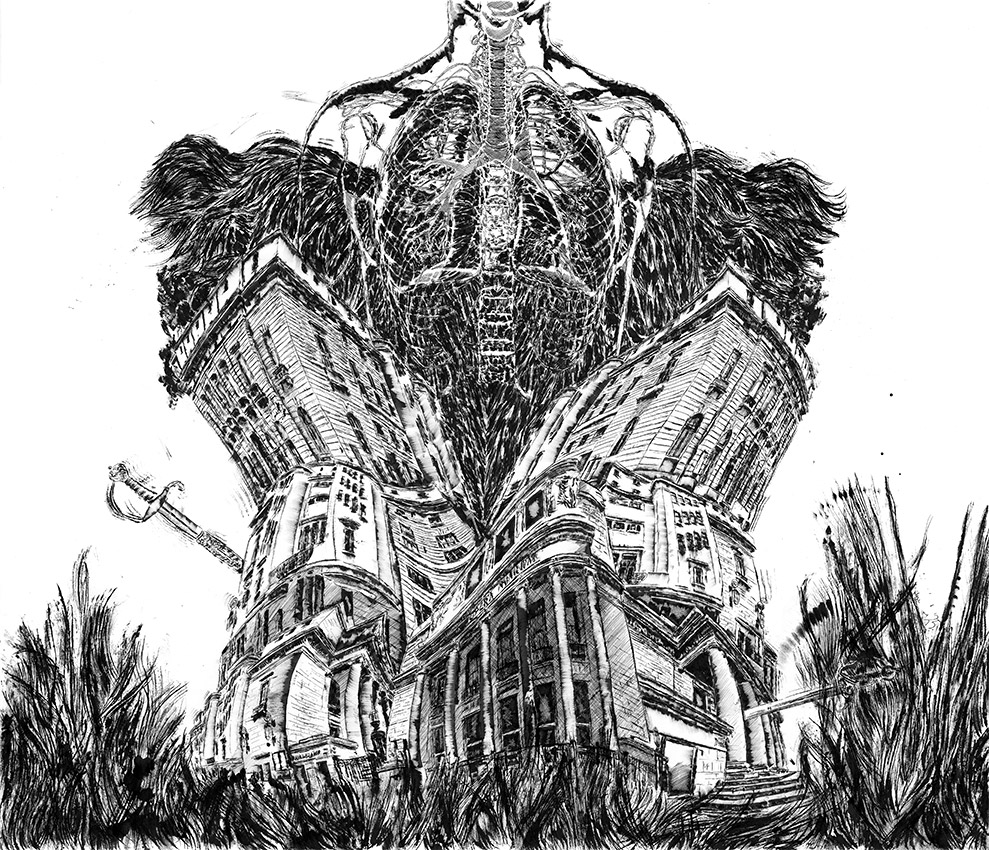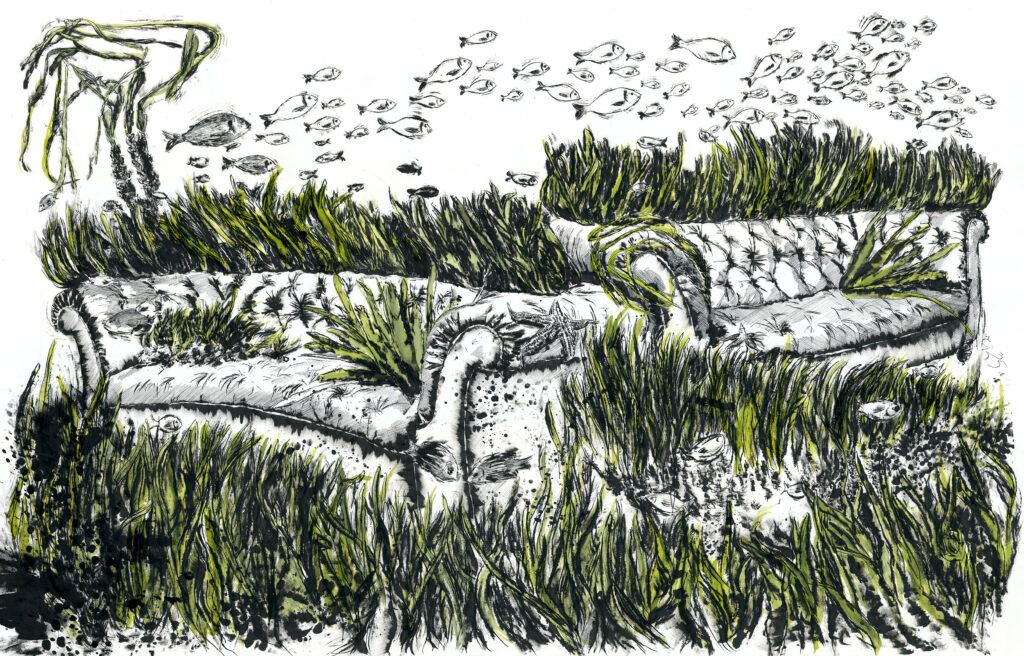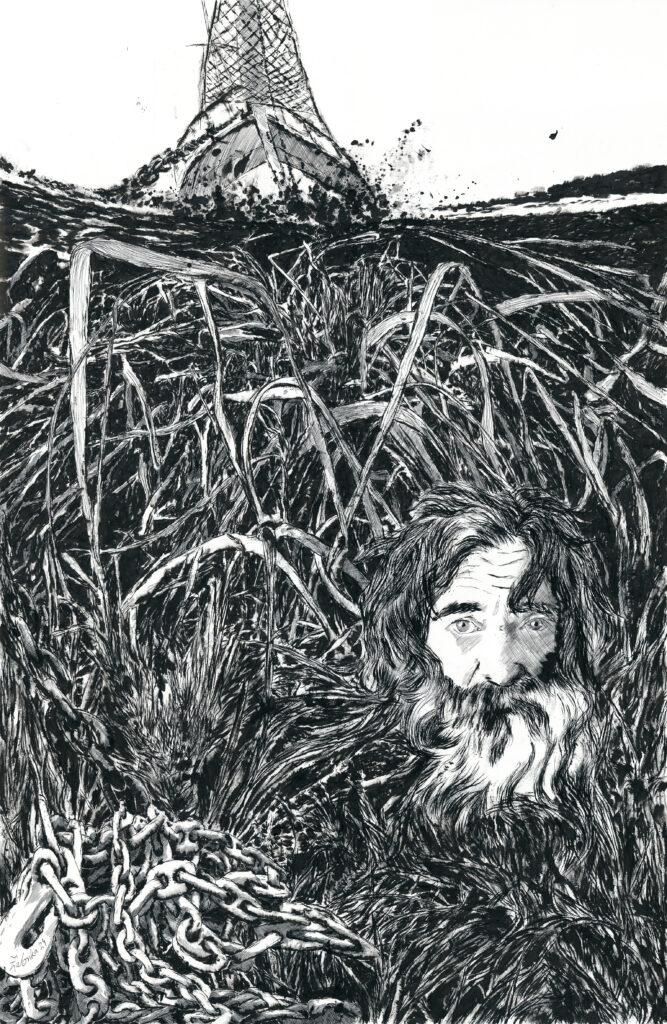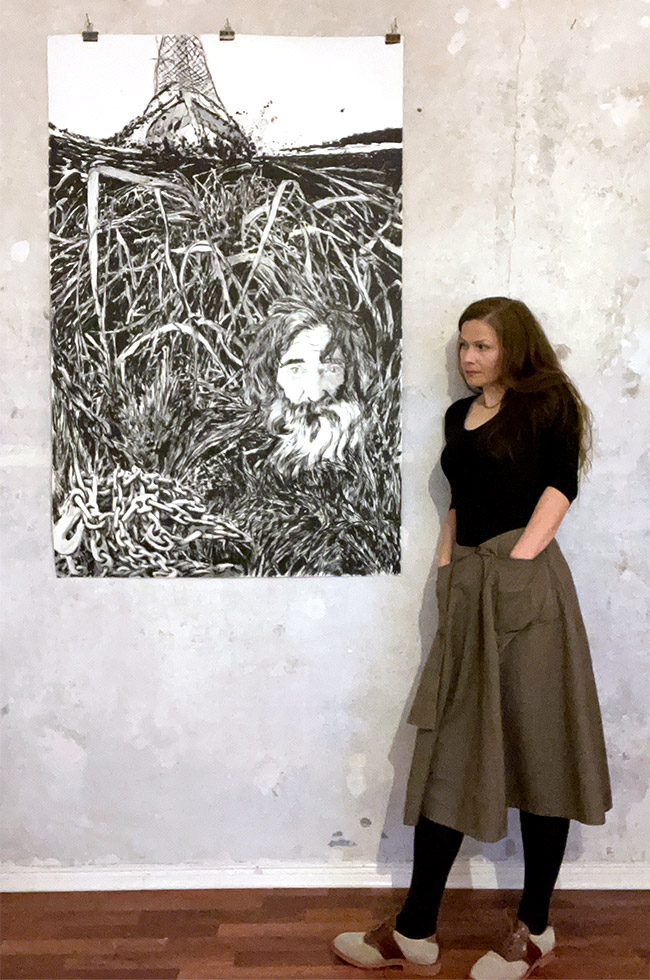2025
Les Coccosphaerales et la Vague à la Mer
Villa Valmer, Marseille
pen-and-ink drawing: 150cm x 150cm, 2025

pen-and-ink drawing: 98cm x 300cm, 2025
One morning in May
On the seabed near L’île Degaby
Maud, the captain, reached out both hands and helped me to jump into the boat. The sea will be rough today. It’s fresh in the morning. The wind is whistling. Some of the equipment is already on the jetty. Boxes, tubes, oxygen bottles, fins and things that are still a mystery to me.
I see Patrick, Lisa, Peter and Clement carrying the equipment into the boat. It’s getting tight. Heavy dark clouds hang over the sea.
Everyone finds their place. An arrangement is made. Then the engine starts the boat. Marseille is now behind us. The big waves seem heavy and powerful. And as the boat rises and falls, I gain respect. Respect for nature. Respect for the work of the scientists. Respect for what it also means to protect nature.
It is cold. The rocking boat slows down. A yellow marker is lowered into the water. It is labelled ‘GIS’. A rope is attached to the yellow buoy. The scientists will carry the other end of the rope with them as they work on the seabed. That way, those of us staying in the boat can see where they are.
The scientists are wearing heavy diving suits. Not the kind I recognise from photos of divers. No, these look like a heavy suit with lots of pockets. The movements are heavy and ponderous. About 40kg of equipment is now attached to the bodies. The weight disappears in the water. The boat sways. A brief consultation. The oxygen bottles are put on. Diving caps are pulled over the friendly faces. Measuring devices attached to the body. Final consultation, final comparison of the measuring devices and then the friendly faces disappear completely behind their diving masks. A flag is hoisted. White and blue. It shows other captains that diving is taking place here. Watch out.
Three black heavily packed creatures with flippers sitting on the edge of the boat now. Which of them is Patrick, Clement or Peter can only be guessed. A large net-like bag is ready to be taken to the bottom of the sea. The time has come for the underwater work. And then, at the same time, the three black creatures drop backwards into the water. A short time later, they resurface, give a signal and then disappear into the sea.
The boat rocks. The wind whistles. It is cold. Maud, the captain, and Lisa, one of the scientists, keep an eye on the yellow buoy. Maud makes sure that the boat always stays close to her. And so we sway along in the choppy sea. For an hour. An hour in the wind, bitterly cold. The view of the shore in the distance and L’île Degaby. How beautiful the island is. Below us, the Posidonia meadows….
LA PELOTE DE MER
The Performance Video ‘La Pelote de Mer’ is an homage to the sea balls of the underwater plant Posidonia Oceanica. Posidonia is an endangered plant that plays an important role in the marine ecosystem. The sea balls, which are formed from the fibres of the plant by the sea current, are washed up on the beaches every year, usually in spring and autumn.
In combination with the Posidonia leaves, they protect the beaches from erosion. The fibres of the sea balls are also a particularly valuable insulating material for building houses as well as for stuffing upholstered furniture. They contain no toxins, have no unpleasant odour and are flame retardant.
This story of the Posidonia sea ball could not be told without the support of the staff of the Direction de la Mer et du littoral – Ville de Marseille, Service biodiversité et environnement littoral et marin and thanks a lot to the oceanologists, marine biologists, climate researchers and all the people who have been working on the conservation and protection of Posidonia for many years.
 Ireen Zielonka
Ireen Zielonka